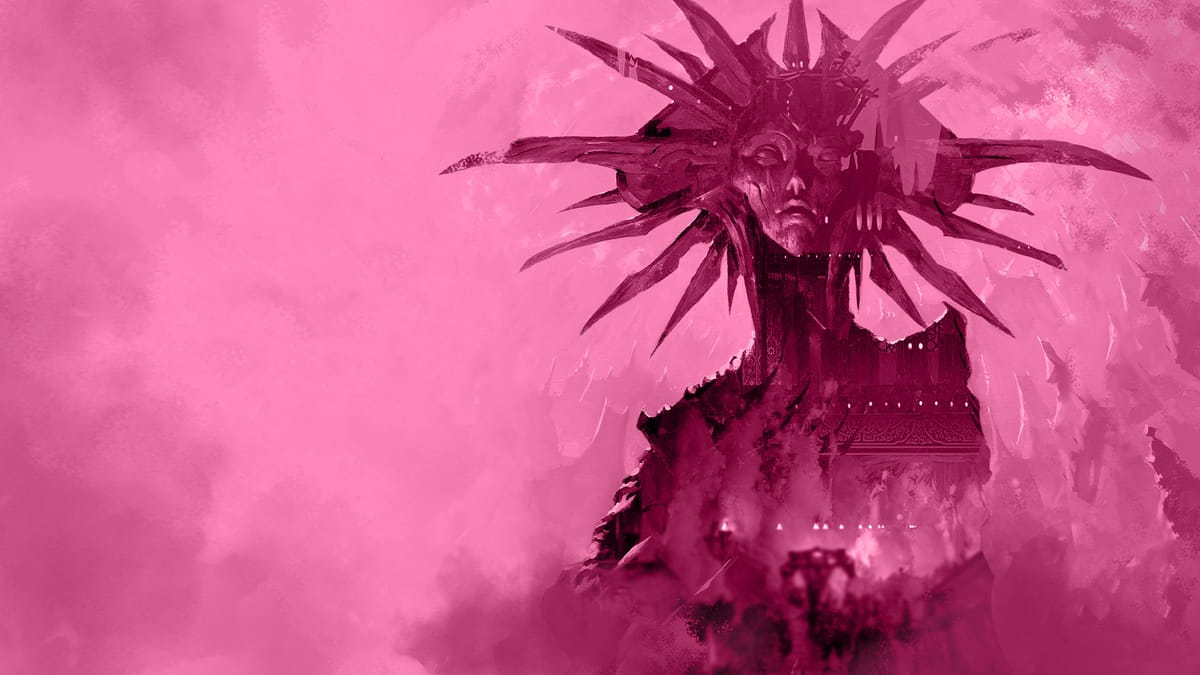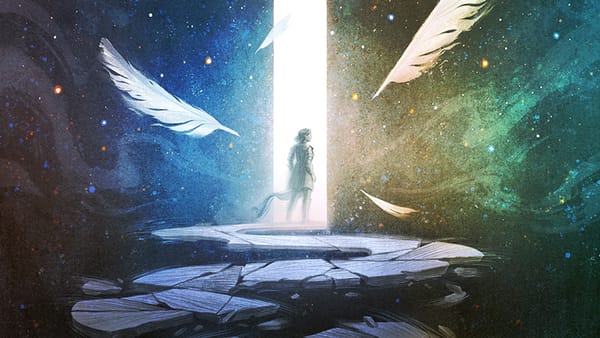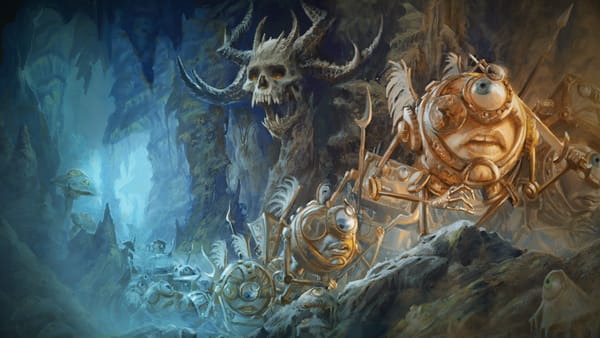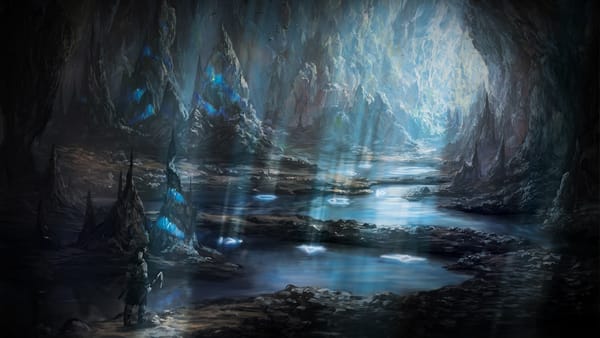Introduction: Spinning Fortune's Wheel
"The Turn of Fortune’s Wheel" promises a multiverse-spanning mystery and can be improved by focusing on the multiversal glitch throughout the adventure, integrating the Outlands more closely with the main plot, and ensuring a cohesive story progression.

Introduction & Critique
The Turn of Fortune’s Wheel adventure is perfect for both seasoned fans of Planescape and new players captivated by cosmic intrigue. The adventure offers up a tantalizing premise never seen in an official D&D adventure: play as multiple incarnations of a character while traipsing across the multiverse on a quest to discover yourself and unravel a reality warping plot. Very exciting indeed!
Most of the scenarios of the campaign have fantastical setups and great mysteries. It opens with a nice bit of fan service for Planescape: Torment players. You then go on to explore Sigil, one of the greatest metropolises in D&D, and interact with a fiendish power player. After that you’re in an open sandbox where you can experience first hand how the outer planes warp reality and turn fantasy conventions on their head.
Except there is one big critique. The adventure doesn’t quite deliver on the core promise. It doesn’t really address the multiversal glitch and what it means to your character until the very end. You also don’t get to experience much of Sigil or the planes beyond once you’re in the Outlands. To top it off nothing in the Outlands adds to the plot of the multiversal glitch affecting the characters, making it feel like a big fetch quest.
To solve the main throughline of the adventure you complete unconnected quests until you’ve checked off a prerequisite amount of them. Then you confront the big bad, who gets away! The finale is an exciting power jump with a big set piece battle against some truly terrifying foes that is…mostly optional once the characters have their power jump.
The Fix Is In
To run a fun adventure with a great story, what are we to do? Some published adventures are too messy to bother with, but there's solid bones in Turn of Fortune’s Wheel. Planescape is one of my favorite settings of all time, and I want my players to experience the multiplanar thrills I felt way back in 2nd edition.
Here’s the goals I’m working toward so this adventure makes sense, feels epic, and becomes one of the most unique experiences my players can have in D&D.
- Make the characters’ self-discovery an integral part of the adventure and the core motivator.
- Tie every piece of the adventure together into a cohesive story that stems from the multiversal glitch.
- Up the stakes of the threat so that it affects the multiverse and looms over the adventure.
This is the broad overview of how the campaign will change to meet those goals.
Part 1: Schemes in Sigil. The characters get their bearings in Sigil and quickly discover that they are involved in an underhanded scheme. While uncovering the plot they make enemies and allies across Sigil and unravel threads that point to a conspiracy that stretches across the multiverse. Just as the heat cranks up the characters find themselves making a deal with Shemeshka and setting off across the Outlands.
Part 2: The Mosaic Mimir. The characters explore the Outlands, trying to track down a rogue modron. They will figure out what their previous incarnations did and uncover a tie to the Blood War and the rise of devils in the Outlands. They find the modron and discover that Shemeshka was behind the grand scheme.
Part 3: Secret Realities. The characters confront Shemeska, restore their memories, and regain their power. They fully realize the threat to the multiverse and must decide to stop it or become villains themselves.
With these goals in mind we need to reshape the backstory of the adventure.
Prelude: A Devilish Design
In order to broaden the story driving the reworked adventure, we need to establish some deeper NPC motivations. Here's what happened prior to the characters waking up in the morgue.
Shemeska is using the lost modrons wandering in Gzemnid’s realm to change reality and raise Gargauth, a fallen devil, to godhood. Gargauth, known as the Tenth Lord or the Hidden Lord, is the ultimate schemer and betrayer, even among the devils. He was once a Lord of the Hells whose power rivaled Asmodeus. After overstepping his bounds Gargauth was cast down by Asmodeus and banished. A vestige of his soul was trapped in his mithral shield, the Shield of the Hidden Lord (established canonically in Descent Into Avernus), which allowed him to spread corruption on Faerun.
Gargauth was recently released from his prison when Elturel was restored. He retreated to the outer planes and sought out Shemeshka at the Fortune’s Wheel. Being the lord of schemers and double dealers, he found his perfect match.
Shemeska has staked out an influential position in Sigil, but Gargauth immediately saw that she craves power in a way that only he could deliver. Shemeska’s influence was pushing against the limits of the Lady of Pain’s silent dictates, and Gargauth was unable to show his face in the Nine Hells. What’s a fallen demon prince to do? Work his way from the outside in.
Gargauth proposed an arrangement where they would manufacture the belief he needed for godly power by twisting the minds of the lost modrons into thinking he was the true Lord of the Hells. In the meantime Shemeska would scheme to open up the gate towns to invading devils and yugoloths, spreading the Tenth Lord’s influence into the Outlands.
Once Gargauth amasses enough divine power he would seize the corrupted gatetowns as his domain, pull them into the Nine Hells and create a new layer. From there he would usurp Asmodeus as the new Lord of the Hells. Shemeshka would of course profit immensely in the short term and gain tremendous power after Gargauth’s ascension and maintain an iron grip across all of the Outlands.
The Power Players
This is where the characters come in. Before they were the heroic party that awakens in the Mortuary they were in league with Shemeska. They traveled the multiverse, opening up the Hells, arming devils, and corrupting the modrons stuck in Tyrant’s Spiral. When Shemeska struck a deal with Gzemnid that allowed her to work her machinations in his realm, she offered him the characters as payment. By consigning them to obliteration Gzemnid would consume powerful souls, and Shemeska would clear out some loose ends that could come back to bite her.
Except the characters didn’t just corrupt the modrons into believing in Gargauth. They convinced the army of modrons they were demigods sent by the Hidden Lord to rescue them from their endless maze. The modrons beseeched the heroes to return, and they did. The characters reincarnated, slightly different from their past selves, and confronted Shemeska. She promptly trapped them in her minimus containment trap and called it a day. But return they did. So she trapped them again. And return they did. Again and again and again. Thus began the multiversal glitch.
Recently R04M turned up in Fortune’s Wheel in search of the “Champions of the Hidden Lord”. Shemeska captured him, but he escaped using the characters’ portal key (the platinum razorvine chip) before she could interrogate the modron and tear him to pieces.
This rewritten foundation gives us the basis to deliver on the premise of the campaign. The characters must rediscover who they are in time to stop a devil lord intent on reshaping the Outlands and bending the multiverse to his will. They are an integral part of a cohesive story with high stakes adventure set across the planes.
The Homework
The revision I’m outlining here sets up a new framework that can smooth out this adventure, but there’s one more thing that can make it sing: pulling the players’ character motivations into the backstory. Look at the concepts they come up with and work in threads that make clear why they would want to work with Shemeshka in the first place. It could be redemption, revenge, or simply power.
Write down one or two reasons why each character was aligned with the plot and work those ideas into the adventure. I’m providing a sample framework for doing so in a later post, but this idea is meant to be malleable.
With the stage set the next step is to retool the campaign’s scenarios, beginning with Part One: Schemes in Sigil.



